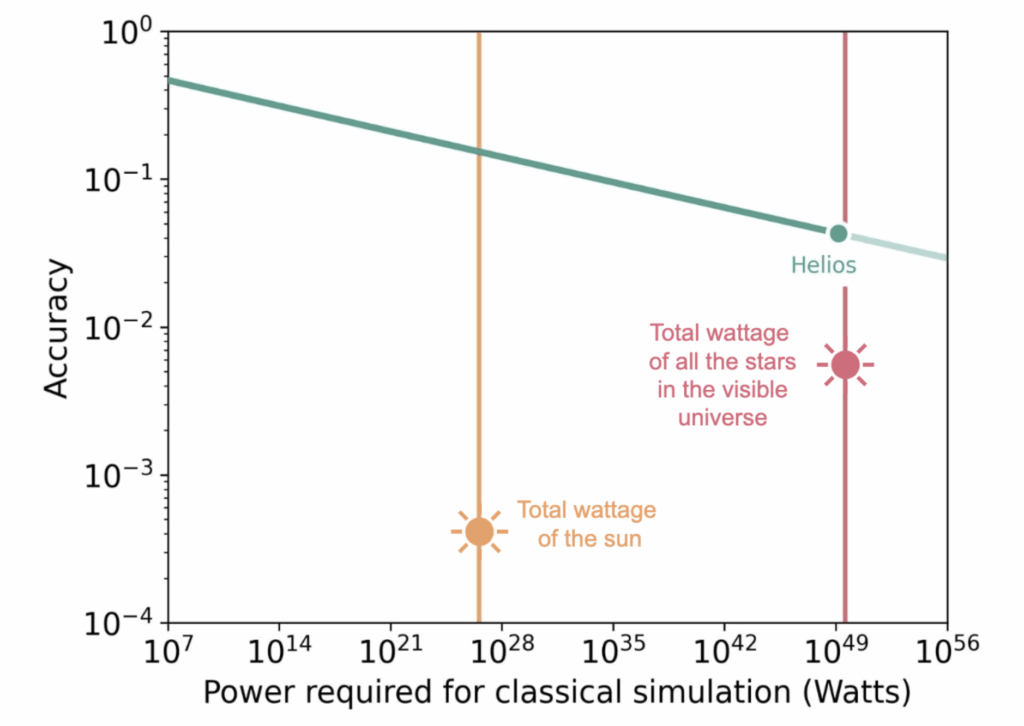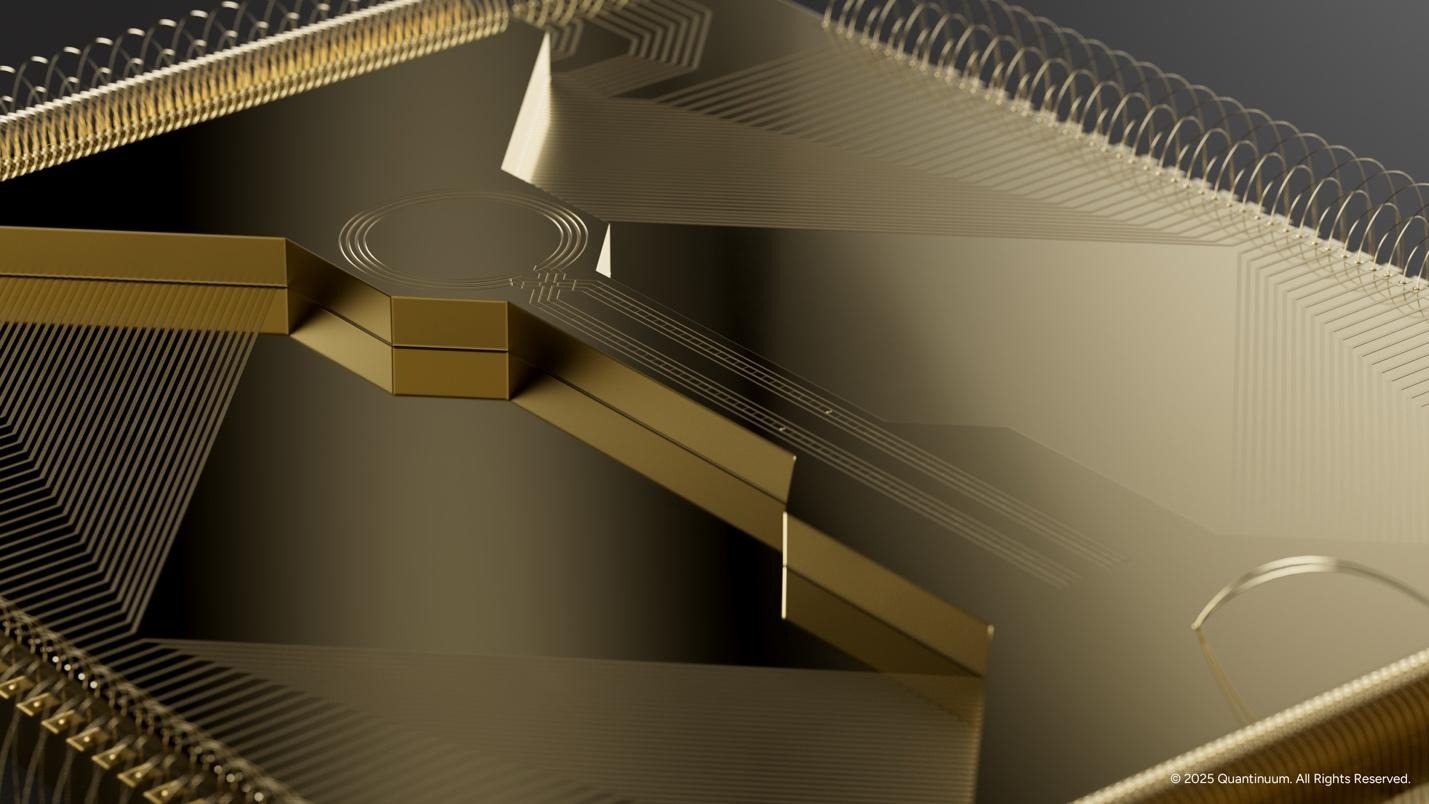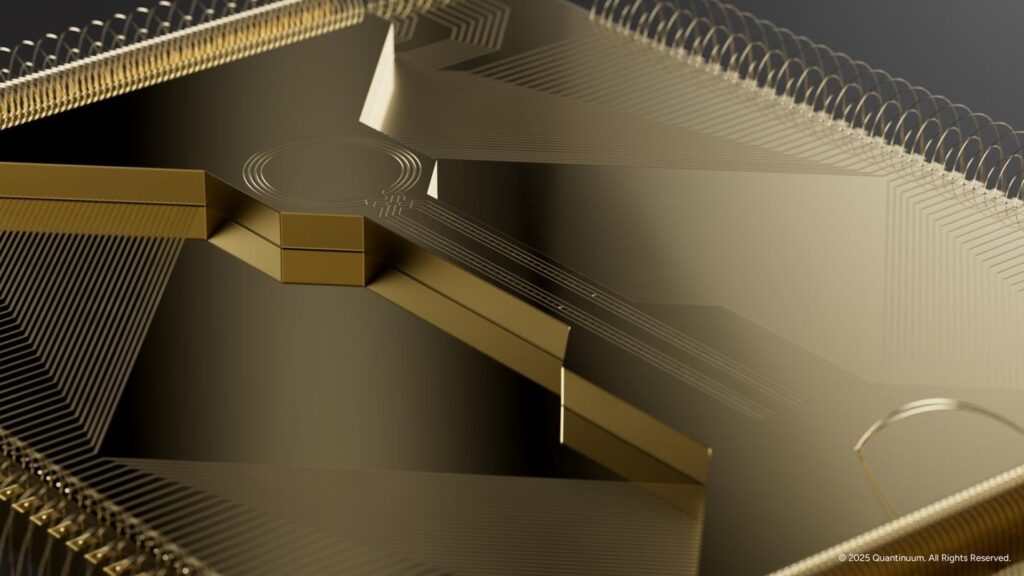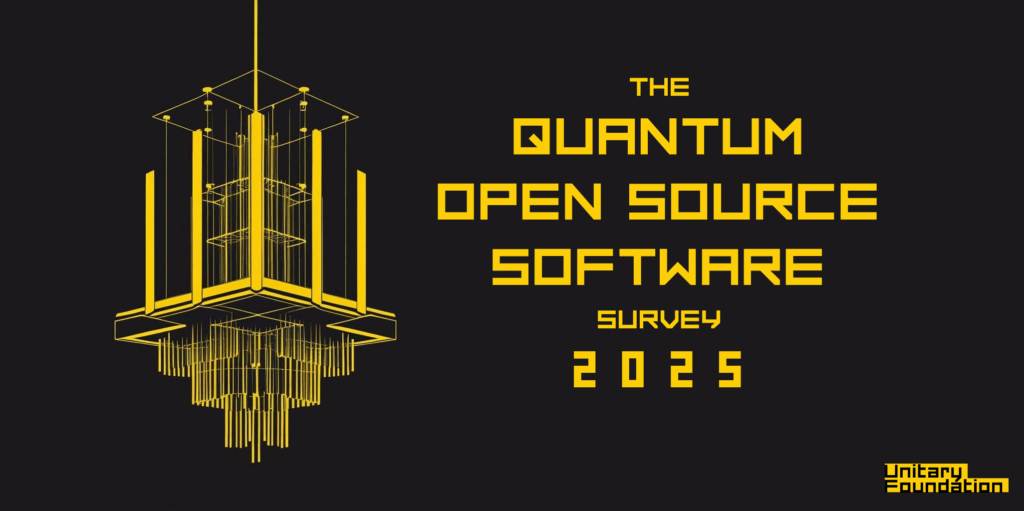Insider Brief
- Quantinuum introduced Helios, the company’s new quantum computer, which combines a next-generation ion-trap design with an upgraded full-stack software environment.
- The system nearly doubles the qubit count of its predecessor, achieves record gate fidelities, and integrates real-time classical-quantum control for enterprise-scale applications.
- Helios is available through cloud and on-premise offerings and marks Quantinuum’s latest step toward fully fault-tolerant quantum computation.
- Image: The Helios chip, which generates tiny electromagnetic fields to trap single atomic ions hovering above the chip, which are then used for computation. (Quantinuum)
Named after the Greek god of the sun, Quantinuum’s Helios system is shining a light on the company’s path toward commercial-grade quantum computing, according to a blog post on the launch. Building on the H2 model, Helios expands its physical qubit capacity to 98 and reports single-qubit gate fidelity of 99.9975 percent and two-qubit gate fidelity of 99.921 percent across all pairs.
The company said these benchmarks make Helios the most accurate commercial quantum computer currently available.
“Helios is a true marvel—a seamless fusion of hardware and software, creating a platform for discovery unlike any other,” said Rajeeb Hazra, CEO, in the post.

According to the post, the device during a two-month early access phase, partners including SoftBank Corp. and JPMorgan Chase used Helios to perform research in quantum magnetism and high-temperature superconductivity. The company describes these as early demonstrations of enterprise-grade capability, pointing to real-world applications in materials science and finance.
Benchmarking data released by Quantinuum compared Helios’ performance to Random Circuit Sampling (RCS), the same standard used to establish Google’s 2019 quantum supremacy claim. The company said that, by fidelity metrics, a classical supercomputer would require the combined power output of all visible stars — which is on the order of 10^48 watts (give or take a few million stars) — to perform the same task in the same time frame. Helios accomplished it using the energy draw of a single data center rack.

Helios’s Core
At the core of Helios is a redesigned quantum processing unit that traps and manipulates individual atomic ions using electromagnetic fields. Quantinuum’s engineers introduced a commercial ion-junction system –described as a “traffic intersection” for qubits — that routes particles through a ring-shaped storage and computation network.
“When I first saw the rotatable ion storage ring with a junction and gating legs sketched on a napkin, I loved the idea for its simplicity and efficiency,” John Gaebler, Fellow and Chief Scientist, Quantinuum, said in the blog post. “Seeing it finally realized after all of the team’s hard work has been truly incredible.”
Errors have cast a dark shadow of the quantum industry. Helios’s design, however, allows qubits to move between dedicated memory, cache and logic zones rather than remaining fixed in place, according to the post. This directly addresses earlier systems, which required serial “swap” operations that added delay and increased error rates. The architecture of this system supports parallel operations, enabling faster performance and reduced noise.
Quantinuum’s QCCD (quantum charge-coupled device) architecture provides full all-to-all connectivity, allowing any qubit to interact with any other qubit. This configuration, according to the company, permits algorithmic designs and error-correcting codes that are not feasible in fixed-qubit layouts such as superconducting systems.
Another significant hardware change involves the choice of element. Helios replaces ytterbium ions with barium, which can be manipulated with visible-light lasers instead of ultraviolet ones. The company said in the post that this switch improves cost, component lifetime and scalability by using mature industrial optics. Barium also enables built-in detection of leakage errors at the atomic level, reducing error propagation during computation.
Real-Time Control
Quantinuum paired the new hardware with a redesigned software stack that enables real-time control. The company’s new execution engine allows quantum programs to respond dynamically to intermediate measurement results, a shift from static circuits to interactive computation.
This engine supports hybrid quantum-classical execution by interleaving GPU-accelerated classical steps with quantum operations. Developers can write programs that adapt on the fly, using conditionals, loops and dynamic qubit allocation. These functions were previously difficult or impossible to implement in quantum circuits.
Helios supports Quantinuum’s new programming language, Guppy, a Python-based environment that integrates real-time feedback and classical logic into quantum code. When combined with the company’s Nexus platform and the Selene emulator, Guppy forms part of a broader stack compatible with standards such as Quantum Intermediate Representation (QIR) and NVIDIA’s CUDA-Q.
The goal, Quantinuum said, is to make quantum development feel as intuitive and modular as classical programming.
Quantinuum’s Path to Fault Tolerance
Quantinuum positions Helios as the foundation for fault-tolerant computation, a level of reliability where logical qubits outperform physical ones. The company said it has demonstrated a fully universal fault-tolerant gate set and achieved record logical fidelities using its Iceberg code, published in Nature Physics.
With 98 physical qubits, Helios produced 94 logical qubits, fully entangled in one of the largest Greenberger–Horne–Zeilinger (GHZ) states recorded to date. These logical qubits achieved better-than-break-even performance, meaning they executed algorithms more accurately than unencoded qubits.
The system’s design allows flexible encoding, according to the post. Users can select configurations optimized for fidelity or scale depending on application complexity. Quantinuum reported that Helios generated 48 fully error-corrected logical qubits at a two-to-one encoding ratio, a density previously considered unattainable.
To support large-scale computation, Quantinuum said future Helios-class systems will integrate real-time decoding on NVIDIA Grace Hopper GPUs, enabling error correction to occur during computation without slowing the clock rate. Together with Guppy, CUDA-Q, and NVQLink, this infrastructure forms what the company calls the groundwork for real-time, fault-tolerant quantum computing.
Quantinuum said Helios is designed to evolve through software and calibration updates, sustaining improvements in fidelity and algorithmic efficiency over time. The system’s combination of hardware innovation and real-time programmability is intended to accelerate the transition from experimental research to commercial use cases across chemistry, finance, and AI.
For more information, readers can access the full Quantinuum technical blog post on Helios.
For our techy readers, check out the technical specs of Helios here.

















